
Who Can Tell
November 30, 2023
Do you remember your very first solo car drive? The excitement, the tinge of trepidation, yet a newfound feeling of independence and freedom? I certainly do. Although only sixteen or seventeen at the time, my parents trusted me enough to let me drive the family car all by myself (a 1947 Chevy).
Where does a young guy growing up in Los Angeles go for his first spin? Why, the Pacific Coast Highway, of course. Driving north along the ocean as the sun set, the only thing that seemed missing to complete the exhilarating experience was music. Impulsively, I turned on the car radio and managed to catch the opening theme of a music program that was just beginning. I did not know what I was listening to, a lilting melody in 3/4 time played by the lush strings of a full orchestra, but it perfectly fit the aura of sun, water, and mountains surrounding me. This was to be the first of many such solo trips that summer, and each time I tried my best to have them coincide with the program’s opening music, for it captivated me. It had more than a show-tune feel, with its florid harmonies and playful melodic leaps. It made me smile and want to sway the with the music’s irresistible rhythm.
I never knew what the music was or who had composed it when I entered the Curtis Institute of Music the next year. There were, of course, other things on my mind, namely, improving my violin skills and learning the vast repertoire of concertos, sonatas, and virtuoso showpieces. Only as time went on did the study of smaller, lighter works assume more importance for me, as it does for any aspiring violinist. And the undisputed master of this form was the violinist and composer Fritz Kreisler.
I was too young to have heard Kreisler perform in concert, but the vast number of his recordings I eagerly listened to made an indelible impression. Although Kreisler was a consummate violinist, the feeling he gave off, whether in the most deeply profound concerto or a mere encore piece, was of an all-embracing love for both the music he was playing and the audience who came to listen to him. You could hear it in the bewitchingly beautiful sound he produced, the warmth of his vibrato, and the suppleness of his phrasing that seemed to come directly from the culture of Vienna, his birthplace. While great artists occasionally earn standing ovations at the end of their performances, Kreisler was so beloved as both musician and human being that he would often receive minutes-long standing ovations before playing a single note.
As a composer, Kreisler’s output was enormous. At the age of seventeen, he composed a cadenza for the Beethoven Violin Concerto that is still a favorite among violinists. Early on, believing he was too young to be taken seriously as a composer, he passed off many of his compositions as fictional creations of composers from earlier eras: “Praeludium and Allegro” by Pugnani, for example. There were works with a regional flavor, such as “Tambourin Chinois” and “Caprice Viennois”, heart-on-the sleeve ones like “Liebesfreud” (Love’s Joy) and “Liebesleid” (Love’s Sorrow), and a four-movement string quartet. Added to that were his numerous transcriptions of other composers’ works that he arranged for violin and piano or for orchestra. To my generation of violinists, the character, substance, and charm of Kreisler’s compositions were utterly seductive.
Not long after graduating from music school, I began placing photographs in my violin case of artists whose playing had inspired and moved me over the years. My wish was to honor them in my little violin-case museum, but I also hoped that their images would spur me on to grow as a musician. Violinists Jascha Heifetz, Niccolò Paganini, Eugène Ysaÿe, Joseph Szigeti, Fritz Kreisler, and cellist Pablo Casals (with a young bearded me standing next to violinist Alexander Schneider) found a place there. Kreisler’s photo stood out from the others, however, since it contained his dedication to the singer Hildegarde, a popular nightclub entertainer of the time, as well as a few bars of music written in his own hand. I assumed the music was excerpted from one of his most famous compositions, but looking more closely, the notes had an odd familiarity I could not immediately place. And then they magically coalesced into memories of my solo car drives and the sun setting over the Pacific Ocean. Fritz Kreisler was the composer of this lilting and light-hearted melody that had so captivated me years earlier. But where did it come from?

The answer arrived surprisingly quickly, in the form of a gift from my friend and colleague, the pianist and conductor Jens Nygaard. Jens, who founded and led the acclaimed Jupiter Symphony, not only revered Mozart and his fellow musical giants, but the far more modest compositions of Fritz Kreisler as well. Over lunch one day, Jens presented me with the score of Apple Blossoms, an operetta by Fritz Kreisler and Victor Jacobi that he had recently unearthed at the Library of Congress in Washington, DC. I had never even heard of Apple Blossom’s existence before.
Apple Blossoms opened at the Globe Theatre on Broadway in 1919, with luminaries like pianist Sergei Rachmaninov and violinist Jascha Heifetz attending. It ran for 256 performances. The plot, a tangle of misplaced love encounters, was, in a word, silly, but it perhaps provided a necessary relief from the horrors of the First World War, which had just come to an end the previous year. In scanning the score, I quickly came across two numbers that Kreisler eventually transformed into violin works, “Miniature Viennese March” and “Syncopation”. Then came another number called “Who Can Tell”, which I recognized immediately. My mystery music now had a proper name attached to it.
Under the first notes of “Who Can Tell”, Kreisler wrote “sentimentally but with a certain swing,” a marking that not only fits the waltz like a glove but in some measure captures the flavor of an entire era. Although “Who Can Tell” made its first appearance over one hundred years ago, it still makes me smile, sway to the beat, and even want to get up and dance.
Arnold Steinhardt, violinist, Lincoln Mayorga, pianist
Subscribe
Sign up to receive new stories straight to your inbox!








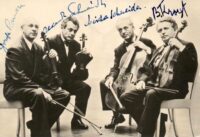





















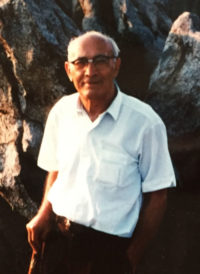


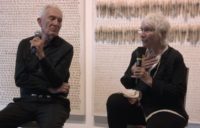


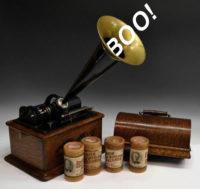
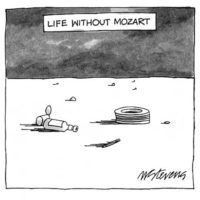















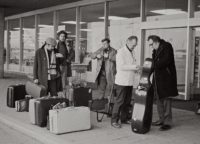



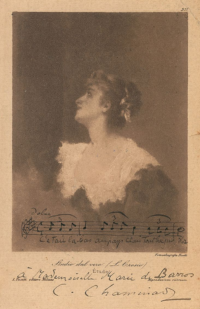




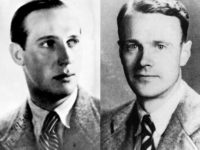


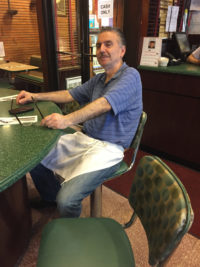



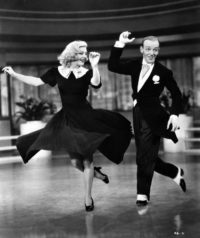







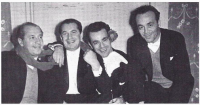
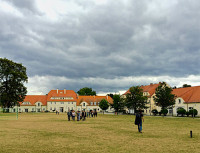
























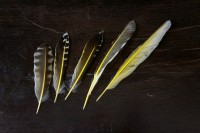

























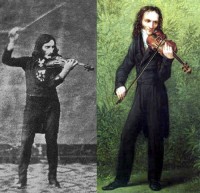



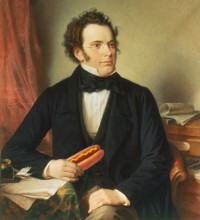

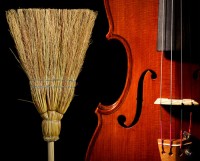





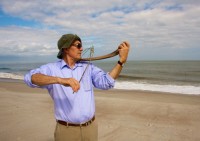























Comments
Am listening…BEAUTIFUL. Nothing like it ! So charming and delicate. Makes one want to dance to its magical lilt !
Janet Goodman Guggenheim
P.S. As a kid I remember hearing Hildegarde on the radio. Now I’m going to search her and relive the past.
Lovely story! Did you ever track down the recording you heard
on the radio?
You are a veritable fountain of great stories. Thank you for the latest!
I too enjoyed driving my first car, (a 1946 Plymouth with floor-based stick shift) always with my radio tuned to KFAC….so when you mentioned a waltz-like string orchestra piece I thought immediately of Tschaikovsky’s Serenade for strings, for which the waltz movement introduced one of the afternoon KFAC programs.
Wonderful, Arnold—thanks for the day-brightener!
my father’s comment on my first drive in 1957 was only:
“this car is for transportation only!”
sandy
Your inspiring memories make my day. Thank you.
magnificent. thank you
Oh how sweet and special! And these excerpted bits of works used as the theme songs of music programs stay with us for the rest of our lives.
I was 14 when I learned to drive. My father was tired of driving me to my piano lessons and wanted me to be able to drive myself. It wasn’t legal but he didn’t worry about it. I didn’t become a pianist but developed a love of music and enjoyed your playing many years. Now I enjoy all of these stories. Thank you.
Wie schön, das Tagewerk mit dieser schönen Melodie zu beginnen. Komm doch bitte wieder mal nach Berlin.
Love this article ! Thanks so much ! Kreisler left many gems…jens nygaard gave a Kreisler centennial concert, much fun ! If you want, i made a string sextet version of ‘’midnight bells’’, a great fave of my late husband selwyn…. Your writing is so special and i loved all your concerts and records !! Still do !
Love it !! Along with your books and records !! Are you interested in a string sextet version of the beautiful ‘’midnight bells’’. ?
You transport readers and listeners with yet another pairing of spendidly orchestrated essay and performance, Mr Steinhard. It is a rare pleasure to hear a violinist and pianist so well matched as you and Mr Mayorga. Thanks to your artistry, we are with you emotionally, sensually and intellectually.
What a fantastic story! I wish I could remember the first piece of music played in my 1970 Squareback on my first solo drive. Sadly I don’t think it was as good as Kriesler. It was also wonderful to hear another story about Jens. His love and passion for Mozart and music in general is sorely missed.
Hello,
my name is Seidel Andreas. I’m very interested to receive more informations about our relative Toscha Seidel. He was 3rd grade cousin of my Grandfather. Sorry for my bad English. I play Violin…
Your sincerely
A. Seidel
Our paths have crossed a couple of times. In 1964 I was a freelance singer and was hired by Blanche Honegger Moyse to augment her chorus in Marlboro. I believe that was the summer when the Guarneri was formed. As an amateur violinist, I played quartets often in your building at Lowenthal’s ( I forget his first name)apartment and saw you occasionally in the elevator. I believe, also, that we share a birth year. Anyway, stay well and keep writing.
He, alone, makes the listener believe that he plays only for him.
Leave a Comment
*/